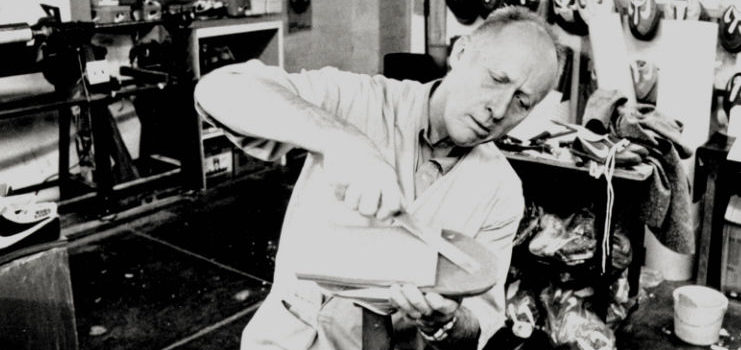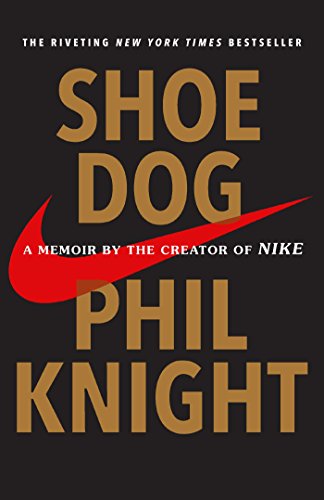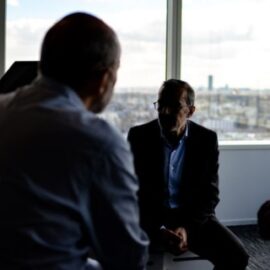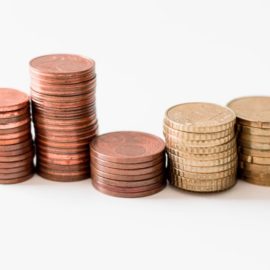

This article is an excerpt from the Shortform summary of "Shoe Dog" by Phil Knight. Shortform has the world's best summaries of books you should be reading.
Like this article? Sign up for a free trial here .
One of Phil Knight’s key partners at Nike was Bill Bowerman, a star Olympic track coach and Phil’s former running coach from college. Bowerman was the mad scientist of the group, experimenting with new shoe designs and rubber formulations to produce a better running shoe. In one landmark experiment, he squeezed rubber in his wife’s waffle iron, producing the waffle sole.
Learn more about Phil Knight and Bill Bowerman’s partnership here, with an excerpted summary of Phil Knight’s autobiography, Shoe Dog.
1964
The Onitsuka shoes arrive! Phil thinks they’re beautiful. After all, they are the embodiment of his future. Immediately, he sends two pairs to his old track coach at U of Oregon, Bill Bowerman.
Phil considers Bill Bowerman part father figure, part army general. A gruff, tough-love descendant of Oregon trail pioneers, Bill Bowerman was revered by the track team. Obsessed with performance, Bowerman constantly experimented with shoes to improve his runners’ performance, particularly to make shoes lighter. Bill Bowerman stressed that an extra ounce to a shoe added 55 pounds of lifting over one mile. As a mediocre runner, Phil was Bowerman’s favorite guinea pig (he wouldn’t dare jeopardize the top runners with experimental shoes).
Bill Bowerman was the most famous track coach in America, training local champions and many sub-4 minute milers. So Phil is shocked when Bowerman says not only did he like the shoes, he wants in.
They work out a deal – Blue Ribbon (the company that would later become Nike) would order 300 pairs of shoes, costing $1,000. Phil Knight and Bill Bowerman would each put in half the money, and they’d split the company 51-49 – Phil with the 51. Once again, Phil Knight gets his $500 from his father, who has reservations about his MBA son leaving his respectable accounting job to become a wandering shoe salesman.
They order 300 shoes, and Phil fills their basement with the shoes. Even better, they come with an announcement: Blue Ribbon Shoes is now the exclusive distributor for Onitsuka in the West.
1965
Coach Bowerman continues to be a huge asset. His large reputation keeps growing – two of his runners medal in the 1964 Olympics. And he keeps tinkering with shoes. He learns that Japanese and American bodies are simply different, and thus the shoes need to be different, like more arch support. To have a great chance in the US, he believes Onitsuka needs to customize their shoes for Americans.
He draws up countless designs and sends them to Japan, only to receive no response. Occasionally they relent and make a few prototypes, and indeed they’re far better. Undeterred by Onitsuka’s hesitance, Bowerman even experiments with producing homemade rubber to make new soles.
1967
Salesman Jeff Johnson leaves for the East Coast, but not without a fight. His father, a salesman himself, pushes Johnson to ask for more – a partnership in Blue Ribbon, $600 in monthly salary, and a third of all profits after 6,000 pairs sold.
Neither Phil Knight nor Bill Bowerman, the only owners of Blue Ribbon, want to give up their equity. So Phil flies to Johnson and his father to negotiate. Despite the arguments of Johnson’s father, Phil holds steady – he would give Johnson a $50 raise, and that was it. Johnson looks torn, but he doesn’t want to quit. He needs Blue Ribbon, and despite Phil’s refusal to answer his letters, Johnson feels like he thrives.
Blue Ribbon is hiring rapidly, and Bill Bowerman has an employee candidate for Phil. Bob Woodell is famous. He was a standout runner at Oregon, but an accident left him paralyzed from the waist down and now in a wheelchair. Phil meets with him and they’re mutually smitten. Phil offers him a job opening Blue Ribbon’s second retail store in Eugene, Oregon.
Bill Bowerman is doing other things, as always. He designs a new training shoe with a more solid sole. Onitsuka actually listens and creates a prototype, and they name it the “Aztec,” in recognition of the 1968 Olympics in Mexico City.
Then Adidas sues – they have a shoe called the “Azteca Gold.” In response, they rename their shoe after the conqueror of the Aztecs – the Cortez.
Bill Bowerman has also written a book called Jogging. Remember how running at this time is a nonsense activity? This book changes that. Jogging sells a million copies, sparking a movement and a whole new generation of runners.
1971
Phil Knight meets with Bill Bowerman. They comment that the outer sole of the training shoe hadn’t changed in 50 years – still waves or grooves across bottom. Bowerman thinks about how he created a new track surface out of polyurethane, just like in the Olympics.
Bill Bowerman, inspired, sees his wife’s waffle iron and thinks about the gridded pattern. He takes urethane and melts it, and it seals shut, now useless. He’d forgotten to add releasing agents to the rubber. He keeps trying and eventually succeeds with the help of a rubber company. He sews the insoles to the bottom of running shoes, and it’s a breakthrough.

1976
Despite their massive sales, finances are continuously an issue, and they continuously ponder whether to go public. It would raise cash to fuel growth, but they feel it would sell their soul and control. So they keep punting it to later, raising loans from new banks.
One loan requires Phil Knight and Bill Bowerman to personally guarantee the loan, which Bowerman doesn’t want to risk anymore. Bowerman wants to sell 2/3 of his stake in Blue Ribbon, which Phil reluctantly accepts. But Bill Bowerman starts feeling idle in retirement and disrespected by Nike, even though they’re giving him the experimental equipment and tools he needs. Phil wants to keep Bowerman happy.
1977
They continue their track record of shoe innovation. Bill Bowerman designs the LD 1000, a shoe with a flared heel meant to reduce pressure on the knee. But it’s finicky and requires an exacting stride to avoid injury. Nike recalls and braces for backlash, but instead they receive plaudits – they’re seen as the major innovator in shoes, and their customers are grateful for experiments, failed or not.
1980: Nike Goes Public
Phil wants no less than $22 per share. He believes they’re worth that much. A company called Apple is also going public that week, and he believes Nike is worth no less than they are. The bankers initially disagree, but Phil stands his ground, and they relent.
They finally go public. Instantly, the team is made. Bill Bowerman’s Nike stake is worth $9 million.
———End of Preview———

Like what you just read? Read the rest of the world's best summary of "Shoe Dog" at Shortform . Learn the book's critical concepts in 20 minutes or less .
Here's what you'll find in our full Shoe Dog summary :
- How Phil Knight started Nike when he was just 24 years old
- The lawsuit that almost ended Nike
- The ups and downs of Nike over 20 years of business






